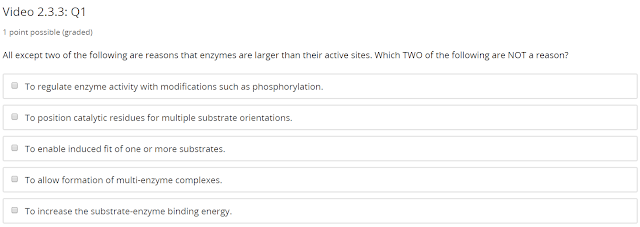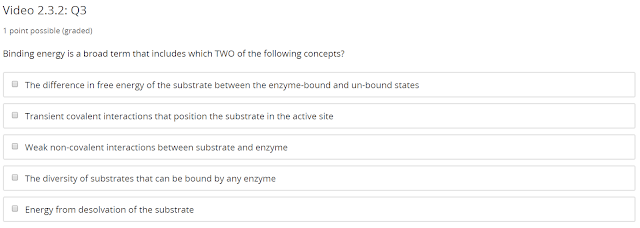To start with, note the "NOT" in the question, that's tricky. The last option is obviously NOT a reason, increasing energy cannot help catalyst. The second option is NOT a reason too, because if catalytic residues allows for multiple substrate orientations, it is harder for the reaction to occur than when the substrate is only in a single orientation. Therefore the answers are
To position catalytic residues for multiple substrate orientations, and
To increase the substrate-enzyme binding energy.
Again these are NOT a reason for the enzyme to be larger than their active sites.
The problem with short peptide is that these catalytic residues are not properly positioned. Therefore the answer is
The constrained folding of the short peptide chain prevents the catalytic residues from being properly positioned.
The reason why we always use the same hydrogen is because the reaction always happen by the enzyme fixed the position of ethanol and NAD$^+$ is a fixed orientation and then the reaction occurs.
Therefore the answer is:
It suggests that the orientation of ethanol is always the same in the active site relative to NAD$^+$
There are only two induced fit, oxaloacaetate binds first, so we know option 2 and 4 are wrong. Option 3 seems plausible, but the correct answer is option 1 - Oxaloacetate binding triggers a conformational change to promote acetyl-Co A binding.
I don't have a firm reason why option 3 is incorrect though.
acetyl-coA is less stable than oxaloacetate, this is the reason why the enzyme binds to oxaloacetate first.
I cheated and Googled this one. These three amino acids are particularly used for phosphorylation. Phosphorylation is the addition of a phosphate from an ATP molecule. Additional phosphate often cause enzyme to change activity and thus regulation.
Therefore the answer is:
These residues are phosphorylated to regulate enzyme activity.



















































